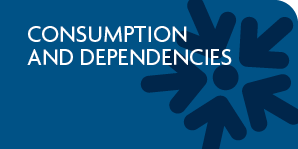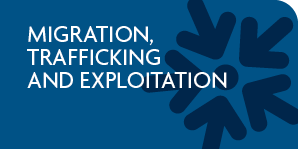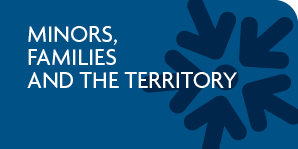
Projects
PROJECTS
AREA OF
Social mediation and Urban safety
|
Between mediation and community: building local welfare SUMMARY The project 'Between mediation and community: building local welfare' is in continuity with the work done in recent years on behalf of the IV municipality of Rome, of the projects 'Piazzando' and 'Alma - Welfare Community'. Financed by the IV municipality of Rome, with funding under the Law 328/00, it aims to experiment a local model of welfare proximity in some districts of the municipality. The project aims - through the promotion of relationships based on support, reciprocity and collaborative relationships, conviviality and solidarity - to build a territorial, competent, community able to recognize its own needs and to mobilize resources to meet those needs.
NAME OF THE PROJECT Between mediation and community: building local welfare
RECIPIENTS Citizens of the IV District
METHOD OF FINANCING Municipality Roma IV, funded by Law 328/00
AREA OF INTERVENTION Some of the districts in Municipality IV
BRIEF HISTORY The project, launched in 2001 in the territory of the Municipality IV is part of the Roman experience of social mediation created in July 1999 and promoted by Roma Secura of the City of Rome. The implementation of the project was entrusted to a temporary association of companies comprised of three social cooperatives (Parsec, Magliana 80, Eureka 1). The project was initially funded by the Social Policy, and the territories in which it was first implemented were Largo Sperlonga (XX City Hall), Ponte di Nona (VIII), Quartaccio (XIX). About one year later, in March 2001, a second project of social mediation was put in place, in the territories of Pietralata (V), Bastogi (XVIII) and Tor Fiscale (IX). In May 2001, the project came under the new Department of Security, under the direction of the Department XVIII - Security, and had as a partner the then rising Council Committee on Security. The supervision and training of the project team has seen the significant involvement of figures in the professional, academic, national and international field. The project development in individual districts was coordinated by a multi-professional team, consisting of psychologists, sociologists, anthropologists, educators and community experts in the form of social, cultural, family and school mediation. While respecting the individual history of each district, the mediators have found some common elements in them, including the presence of conflicts related to the allocation of housing or employment, the difficult relationship between citizens belonging to different cultures, to the degradation of common areas such as public squares and gardens, to incidents of abuse and bullying in schools and other educational institutions, to trafficking and consumption of drugs and a widespread forms of lawlessness. In these neighbourhoods it has been generally observed there is a poor social cohesion, and communication is often absent among social and institutional actors in the area. The inhabitants mostly belong to lower middle classes, often disadvantaged, whose situation is often compounded by the problem of unemployment. These are regions that, alongside the unresolved problems, have unexpected resources in terms of potential activation of subjects and existing skills, often not valued. In such contexts, we try to get to know the community beyond the stereotypes of social unrest which connoted them, in order to explore instead latent potential, the ability to find solutions and their own resources. In recent years (since 2008) the scope of the projects of social mediation of Rome has been greatly reduced, with a gradual economic disinvestment that literally erased the interventions in historical territories. The Social Mediation Esquilino (Historical Centre of the Municipality of Rome), together with the Well-done project (V district) are the only remaining projects to witness this project for more than a decade.
OBJECTIVES General objectives:
Specific objectives:
METHODOLOGY OF INTERVENTION The methodology adopted is based on a conception of the conflict interpreted as the opportunity for change and growth for the entire local community, a potentially virtuous dynamic, rather than a social pathology to cure. The local community is broken down as a field (sometimes permeated by conflict sometimes by the dialogue), in which one must never ignore the differences and processes of concealment. The sense of this action remains within the community and feeds dynamic participation. In this interactive process, the mediator infects the community about the possibility of always finding the best solutions to the functional management of the conflict, he/she stimulates the necessary mediations and follows the solution process and its effects in the social body, interacting with individuals in designing actions and practice solutions. In each territory the approach to conflict management has so stimulated the creation of stable and informal moments of debate and discussion on the issues highlighted by the citizens themselves and they have become protagonists of experiences of participatory planning and integrated their own territory. Mediators work with the functions of facilitators of communication and stimulus to the realization of the shared pathways; their position is either internal/external to compared to the same local community, allowing them to share their perspectives, languages and trust, but also to remains, in cases of conflict, "above the parties", and to identify resources and solutions not previously considered. Rather than transmitting the theoretical necessity of a non-violent culture in conflict management, it has worked in favour of concrete experiences of management and the transformation of critical issues through participating in restarting communication. Social mediation is configured in a set of actions that have contributed to the construction (or reconstruction) of communication exchanges, aimed also at understanding and managing the reasons and conditions of the relational compatibility. It has represented more than just the application of a technique for dealing with conflicts, taking shape as a process of production of sociability that can regenerate bonds between people and provide more opportunities to share and address the problems, thus regenerating the connective tissue that binds the citizen to the territory and his/her living environment.
TOOLS AND ACTIVITIES Mapping Action Research Promotional activities of the networks of citizens, round tables at the territorial level. 'Low-threshold' services aimed at the prevention of distress, listening and aggregation of citizens Listening points inside the premises of associations, of the elderly community centres and cultural centres, schools Entertainment activities social, cultural, care of territory Environmental workshops, recycling and construction of handcrafted items for the urban Gardening in the districts and urban gardens, street art and decoration of urban space Laboratory of self-representation Laboratory of intergenerational exchange Laboratory of New Technologies for adults and elderly citizens Laboratory of New Technologies with students Listening space for women Learning activities to care for the elderly Web radio NETWORK AND TERRITORY The project works according to a network prespective, together with local actors and territorial resources, specifically with Social Centres for Elderly, Cultural Centres, schools, districts' associations.
CONTACTS AND PROCEDURES FOR ACCESS E-mail addresses: info@well-farecomunita.it; press@well-farecomunita.it Website: www.well-farecomunita.it Facebook: Well-fare comunità municipio roma IV
ORGANIZATIONAL STRUCTURE Various professional figures work in the project (social mediators, sociologists, social workers, psychologists, technicians etc.) with specific training and experience in community work. The project also foresees the insertion of two people in job-training programmes, identified by the municipal social services and apt to provide an operational support to the project.
EVALUATION Monitoring and assessing activities are carried out throughout the implementation period and developed according to a multi-method qualitative and quantitative approach. The activities involve beneficiaries and operators in moments of reflective exchanges (also based on written, photographic and video documentation of the activities), so as to make them contributors to the project monitoring and share the development of the intervention, thus increasing the possibility of recognition and attribution of meaning to the experience of each individual and of the whole community.
|






